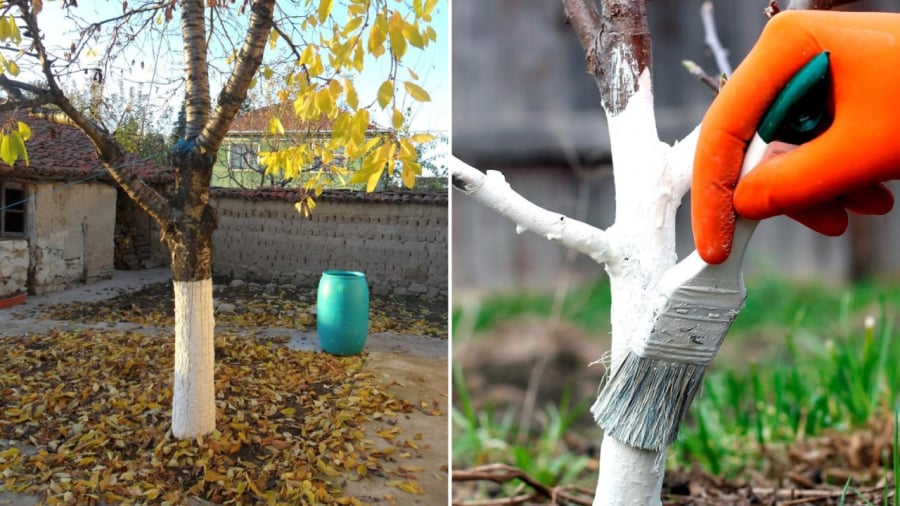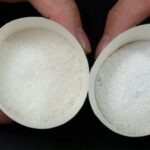It is a common practice to see people painting lime on tree trunks when walking on the streets, in parks, or in orchards. This practice not only makes the trees look aesthetically pleasing but also has specific benefits.
Benefits of Painting Lime on Tree Trunks
Painting lime on tree trunks is a simple yet effective method to prevent attacks from insects, mold, and harmful diseases that can affect the health of the trees.
This practice has been used for centuries, especially to prevent boring insects from damaging the trees, which can cause them to wither.
Lime painting on tree trunks is an ancient agricultural practice that has been applied in many countries around the world and is still used today.

– Pest and Disease Control
Applying lime creates a protective white coating around the tree trunk. During the Middle Ages and Renaissance, lime and salt were commonly used in agriculture as they were affordable and effective in protecting crops.
Lime acts as a barrier against various pests and diseases that can harm trees. Certain pests, such as rodents and boring insects, can cause significant damage by gnawing on the bark, drilling holes, and laying eggs. This can lead to infections, weakening, and eventual withering of the tree.
Lime is a natural alternative to chemical pesticides as it has antibacterial and antifungal properties, all while being environmentally friendly and non-toxic to humans.
The white color of the lime also makes it easier for farmers to monitor and detect any unusual colors or signs of disease, allowing for timely treatment.
– Protection from Sun and Frost Damage
Young trees with thin bark are susceptible to sun damage, especially when exposed to direct sunlight. Painting lime on the trunks acts as a natural sunscreen, reflecting sunlight and reducing the risk of sunburn.
The white coating also helps regulate the tree’s temperature, keeping it cooler, similar to how wearing white clothes on a hot day feels more comfortable. This reflective property aids in heat dissipation, benefiting the tree’s overall health.
Additionally, lime painting helps protect trees from frost damage by insulating the bark from extremely low temperatures.
– Aesthetic Appeal
Painting lime on tree trunks in streets or parks adds a touch of beauty and catches the eye. It also makes the trees more visible, which is helpful for identifying obstacles on roads or pathways.
How to Paint Lime on Tree Trunks

Before painting lime, it is essential to inspect the tree trunk and remove any moss or fungus using a high-pressure water spray if necessary. This ensures better adhesion of the lime.
The lime solution used is typically a 1% lime solution or a mixture of lime and water in a 1:5 ratio.
Use a brush to apply the lime solution from the base of the tree trunk, close to the ground, and work your way up. When painting during the fruiting stage, avoid getting lime on the fruit-bearing wires as it can cause damage to the fruits. For most fruit trees, the lime is applied up to a height of 1.5 meters from the ground, sometimes even extending to the tips of the branches.
For larger areas or multiple trees, a sprayer can be used to expedite the process. Ensure that the lime solution is filtered through a fine cloth a few times before pouring it into the sprayer to prevent clogging.
You can apply this technique to protect your home garden trees from pests and diseases, promoting their healthy growth.



































